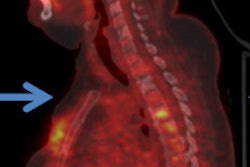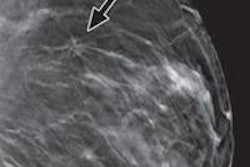Dear Women's Imaging Insider,
Is the human brain wired to miss breast cancer? Researchers at Brigham and Women's Hospital in Boston think it might be.
Karla Evans, PhD, and colleagues found that radiologists reading screening mammograms tended to perform worse when they read a group of cases that contained fewer cancers. When they viewed a group with additional cancer cases, their performance improved.
What's going on? The researchers believe that the normal human visual search process tends to miss targets when they appear less frequently -- and breast cancer is a good example. But all is not lost: There are ways to ameliorate this effect. Click here to learn more.
After you've finished reading our Insider Exclusive, which is available to you before the rest of our AuntMinnie.com members, find out what else is going on in the Women's Imaging Digital Community:
- Learn why Belgian researchers say computed and digital radiography have comparable performance for breast screening.
- Take a look at the Society of Nuclear Medicine and Molecular Imaging's Image of the Year: an FDG-PET/CT scan that shows the effectiveness of radium-223 dichloride in treating bone metastases in breast cancer patients with bone-dominant disease.
- Read about how adding shear-wave elastography to a second-look breast ultrasound study -- performed after dynamic contrast-enhanced MRI -- detected nearly one-third more cancers than B-mode ultrasound alone.
- Discover why radiologists who read fewer than 1,000 mammography studies per year may have worse diagnostic accuracy than those who read more.
- Find out how computer-aided detection technology affected sensitivity and overall accuracy in breast MRI for both experienced and novice readers.
As always, if you have a comment, report, or article idea to share about any aspect of women's imaging, I invite you to contact me.




















